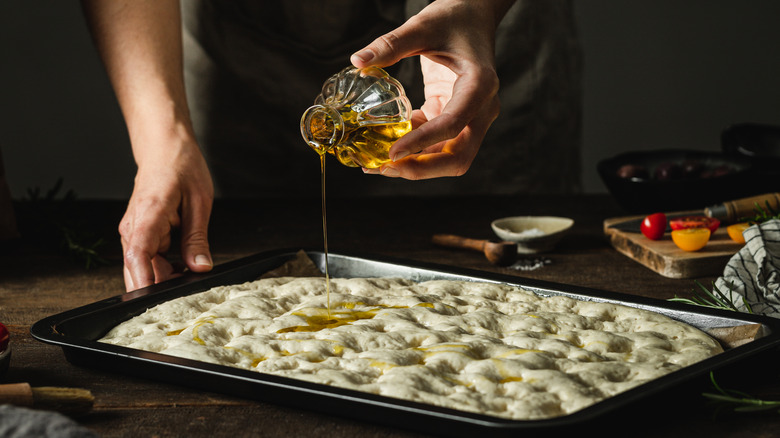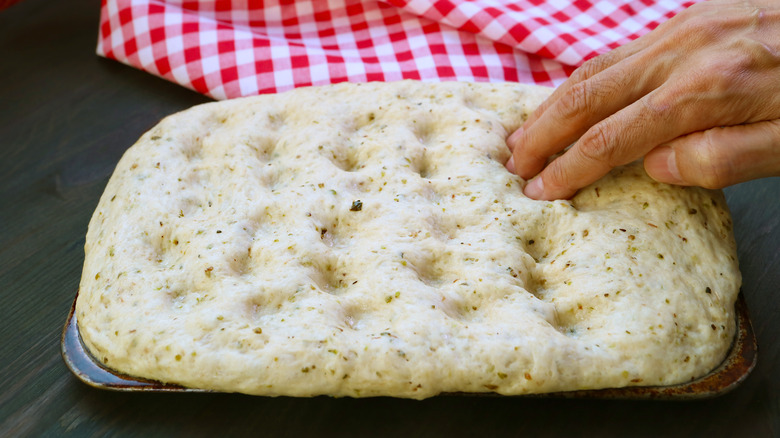The Dimple Tip That Will Result In Better Homemade Focaccia
On the list of breads you should be baking at home, focaccia needs to be moved to the top. This classic Italian flatbread is beloved for its light, fluffy interior, oily, crispy exterior, and endless amount of flavorful toppings. However, as simple as focaccia bread is to make, there are a few steps you need to follow in order to get the best results. One of the most important is to dimple your dough.
Not reserved only for those blessed with killer smiles, dimples are very important when it comes to making focaccia. A key component of that wonderfully oily and crispy exterior is the bubbling effect. A quick look at a good focaccia should immediately show you a top riddled with a series of shallow holes. These are the dimples — little pockets where the toppings and oil can pool and sizzle. During baking, these oily pockets will provide beautiful brown spots, aiding in the bread's bubbly and mottled appearance.
Not just for aesthetic flair, dimpling the dough is a vital step because it expels air from the dough, preventing it from rising too fast, giving it that perfect crumb. That, combined with the weight of the oil, will prevent a puffed-up poolish that more closely resembles a loaf than a tasty crust. Plus, skipping the dimpling would mean you missing out on perhaps the most enjoyable part of the whole process.
How to dimple focaccia
Why would you pass up any opportunity for some culinary ASMR, as you get to press your fingers into the soft, squishy dough like a kid playing with kinetic sand? And if you're a bread-baking parent, get your kids involved in dimpling the dough because they will surely enjoy it as much as you.
Dimpling should take place between the dough's first and second rise and involves taking your fingers and pressing indiscriminately into the surface of the dough, getting in as many as possible. Concerning the question of how deep the dimples in your focaccia should be — they should be quite deep, roughly up to your first knuckle, as they will fill in a bit with the second rise. You can even press to the bottom of the pan, so long as you don't break through the focaccia. The deeper you go, the more volume will be available for oil to sit, which is key to a good browned top.
When it's ready to bake, fill in the dimples with oil and spread it over the top so it glistens, then add any toppings you like. While classic Tuscan ingredients like sun-dried tomatoes, pine nuts, and artichoke hearts are one way to go, you can't go wrong with our leek, goat cheese, and pancetta foccacia either.

